The Vondelpark is a public urban park of 47 hectares in Amsterdam, Netherlands. It is located in between a residential tissue of the city but at the same time, in a very close proximity to the city centre. It makes it unique in terms of the variety of actors and usages that are all the time happening simultaneously all over this space. Taking into consideration that the park has around 10 million visitors annually, it is visible that the multitude of needs is important as well. Within the park is an open-air theatre, a playground, tennis courts and several food service facilities. The Vondelpark Openluchttheater is an open-air theatre with shows from June until August. There are performances of classical music, pop music, world music, dance, musical theatre, and cabaret. At the same time, it also functions as a leisure, cosy place for inhabitants of surrounding neighbourhoods. This is why, there is no one defined way to use this space and therefore we claim that it’s design should correspond to this ever-changing character of this place.
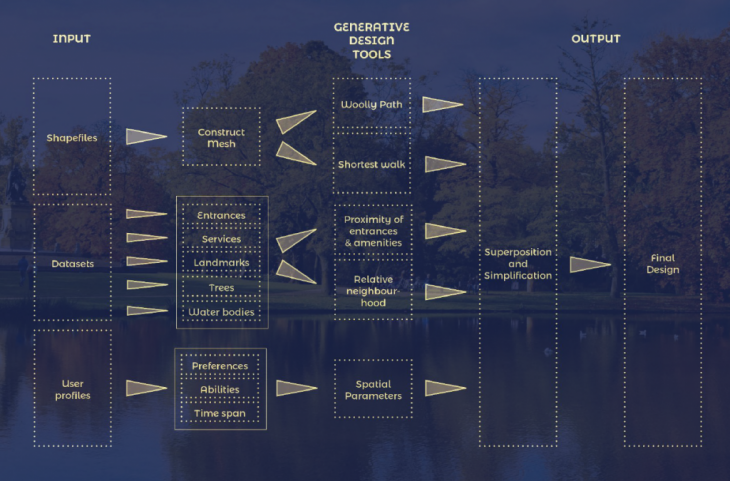
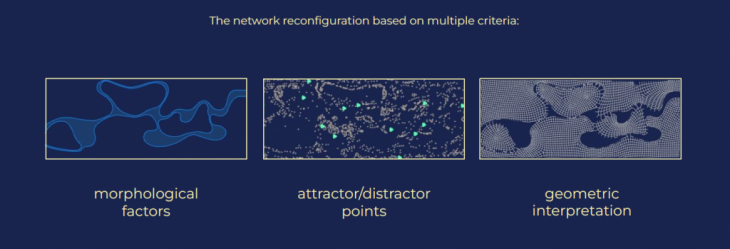
Our project aims to come up with a computational analysis followed by parametric research for solutions and optimal design to restructure this area in order to project and conceive user-oriented pathways within the existing frame. With the respect for the presence of trees, landmarks and waterbodies, we propose the reconfiguration of flows directly oriented to the user. In-depth analysis of natural and man-made characteristics of this park have allowed us to carefully define and compute pathways suitable to a wide range of visitors. Our proposal takes into consideration different users (e.g. cyclists,, tourists, young adults, the elderly etc.) and the specific demands they might have regarding the park (shade, cooling, recreation, refuge, etc.)
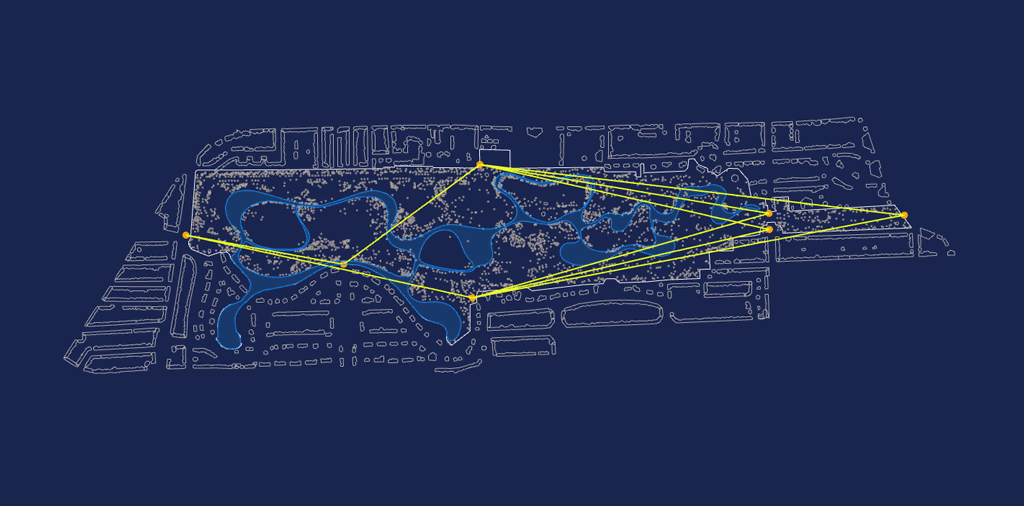

We generated multiple pathways based on points of entry to the park, proximity of trees, waterbodies, landmarks and service hotspots such as restaurants and bars. We started by using a woolly path algorithm to find all the best possible connections between entrances and later on, with the help of paths such as shortest path and relative neighbour, we generated solutions that assure the optimal use of this space in terms of accessibility to the points of interest according to user profiles.

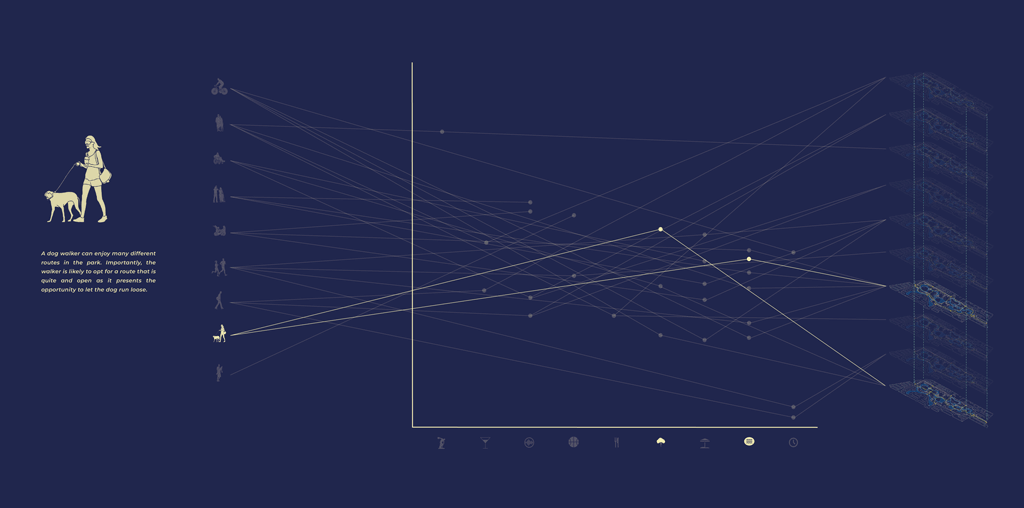
Following the analysis of connecting the entrances by using the woolly path algorithm, we proceeded to add more depth to our investigation. We identified a set of parameters that may steer the configuration of paths in the park. These were largely classified into the morphology of the park (e.g. water bodies and trees); as well as into the services and amenities hosted by the park (e.g. bars, restaurants, landmarks, etc.) .
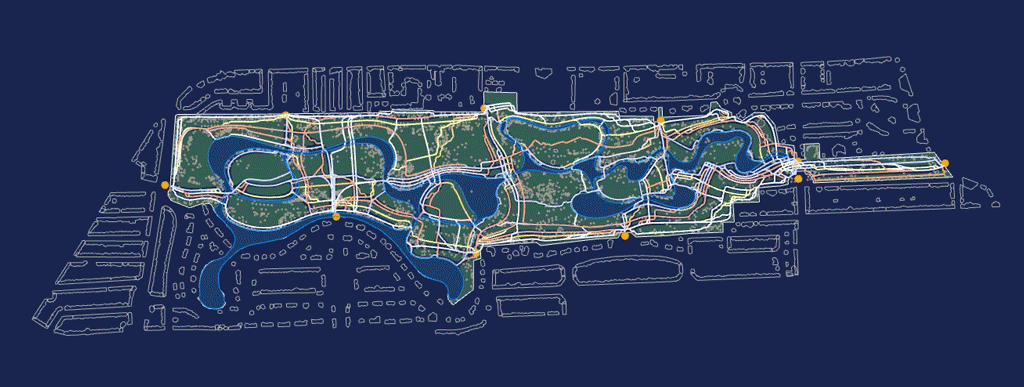
Later on, superposition of all those possibilities, permitted us to define the final network of connections. Optimally, based on our interactive dashboard, a person can choose the criteria that correspond the most and generate the path the most adapted to his personal needs. This operation also allows municipalities to better manage this beautiful space in a more user-oriented way, for example for better placement of urban furniture or other facilities that can improve the connectivity and attractiveness of this public space.
Vondelpark Reconfigured is a project of IAAC, Institute for Advanced Architecture of Catalonia developed Master in City and Technology in 2021/2022 by:
Course: Computational Urban Design 2
Students: Kriti Nirmal, Pushkar Runwal, Weronika Sojka, Lucas Zargozo
Faculty: Eugenio Bettucchi, Iacopo Neri